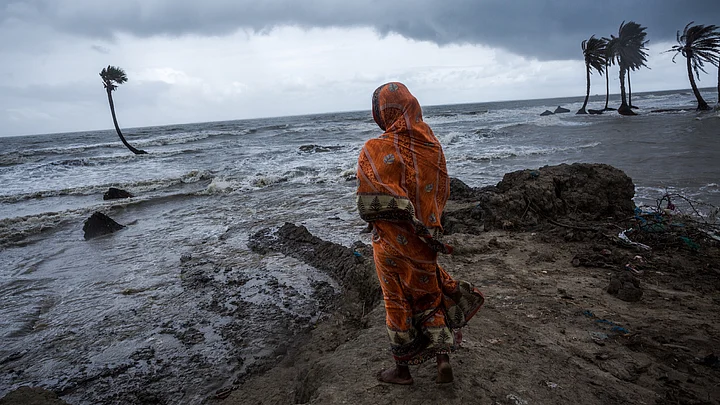A report titled G20 Climate Impacts Atlas, drafted by a team of more than 40 scientists at the Euro-Mediterranean Center on Climate Change warned of the catastrophic impacts of climate change on G20 nations if steps weren't taken to reduce emissions and tackle climate change.
The report, funded by the European Climate Foundation, comes two days before the commencement of the G20 Summit in Rome (30-31 October).
For every G20 nation, the scientists analysed how a world that is heating up fast will impact food and water availability along with human health and livelihoods of people.
In the last two decades, heat-related deaths have gone up but at least 15 percent in 20 countries.
Forest fires, too, have had catastrophic consequences, with the fires having burnt an amount of land in all G20 countries combined that is one-and-a-half times the size of Canada (the second largest country in the world).
No G20 country is expected to be immune to the effects that climate change is anticipated to have on many aspects of human life.
These effects will show themselves in different ways like rising sea levels, reduction in supply of freshwater, proliferation of dengue and other diseases, and heat-related deaths.
The catastrophic consequences of climate change have been pointed out individually for the G20 countries.
For example, heatwaves in Brazil are expected to last 60-70 times longer between 2035 and 2065 if it continues with high rates of carbon emissions.
However, if it keeps its emissions low, then heatwaves will last only about five times longer.
The rate of fish-catching in France could reduce by 33 to 45 percent by the year 2050.
Additionally, in the United States, if emission rates continue to remain between high and moderate , 90 percent of the population could be vulnerable to dengue, 80 percent to zika virus, and approximately 30 percent will be at risk of malaria.
The report also shows how much the G20 countries stand to lose if they don't tackle climate change.
It was concluded that the GDP of all the G20 countries combined could fall by 4 percent by 2050 and by 8 percent by 2100.
Countries like the USA, Saudi Arabia, Japan, and even India could witness a 10 percent drop in GDP and Canada, Indonesia, and South Africa could face a loss up to 13 percent.
The report also spells out how cutting emissions will limit the damage to a considerable extent.
For example, curtailing the rise of global temperature by 2°C could ensure that the fall in GDP of all G20 countries combined is limited to only 0.1 percent by 2050 and to 1.3 percent by 2100.
The loss of potential fish catch in countries like India would be halved and in the USA, economic damage from the rise in sea level will be much less damaging.
Impact on India
Heatwaves are expected to last 25 times longer by 2036-2065 if the global temperature rises by 4°C, and over five times longer if it limited to 2°C, and only one-and-a-half times longer if it is limited to 1.5°C. Along with low temperature rise, emissions also have to be reduced.
The yields of crops like sugarcane, wheat, and rice would fall as climate change heats up the environment.
The report says that these yield are bound to fall even if there is adequate supply of water and nutrients, and the impact of floods and storms are minimal. At the same time, the demand for irrigation water is expected to rise by 29 percent by 2050.
If the global rise in temperature is indeed 4°C, then the frequency of droughts will increase by 48 percent by 2036-2065. If the rise is by 2°C, then the frequency rate becomes 20 percent, and with a 1.5°C rise, it becomes 13 percent
A reductio of 8.8 percent by 2050 could be seen in potential fish catch fall if emissions are lowered, but almost double that rate (17.1 percent) if emissions remain high.
Approximately 18 million Indians are vulnerable to flooding by 2050 because of high emissions, as opposed to the 1.3 million today.
The report also warns about a drop in total labour, which is estimated to fall by 13.4 percent by 2050 if emissions are low.
